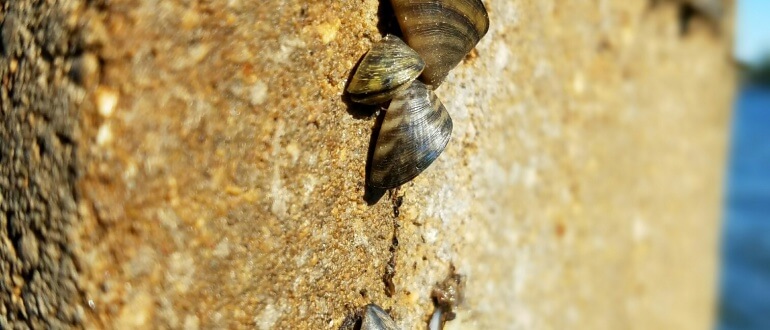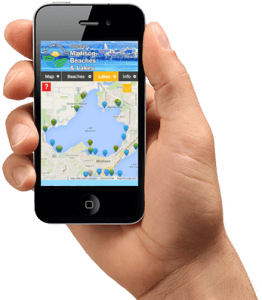Zebra mussels, a native of Europe and Asia, have recently established a reproducing population in lakes Mendota and Monona. These little filter-feeding organisms can negatively impact native lake ecosystems. Although they might increase water clarity by feeding on zooplankton, green algae and other debris, zebra mussels do not eat blue-green algae. This means they can deplete the water of important fish food and natural algae grazers. Zebra mussels may also damage boat hulls and engines and cut the feet of swimmers. Zebra mussels are difficult to eradicate once established in a water body.
Clean Lakes Alliance is working with Wisconsin Department of Natural Resources and UW-Madison Center For Limnology to track zebra mussel population establishment and expansion in the Yahara chain of lakes and could use your help!
Take Action for the Lakes
As you take out your piers and store them for winter, please check for zebra mussels. They have shells very small in size up to two inches, and are D-shaped with light and dark colored stripes. Zebra mussels love to cling to hard surfaces like metal, wood, and cement.
If you find zebra mussels and you are on lakes Waubesa, Kegonsa, or Wingra please take photos, document your location, make an estimate of the number of mussels, preserve some of the mussels in a container at room temperature with clear alcohol or in a refrigerated container with water, and contact Gina LaLiberte, water resources management specialist at the Wisconsin DNR, at Gina.LaLiberte@wisconsin.gov or 608-221-5377. It’s really helpful if you can take a picture along with a coin or ruler for scale.
To help prevent the spread of zebra mussels to other waters make sure to clean and drain all water, plants and other debris that can harbor zebra mussels from your boat, trailer, and equipment. For more information on zebra mussels, see the DNR website at dnr.wi.gov/topic/invasives/fact/zebra.html or https://dnr.wisconsin.gov/topic/Invasives/prevention.



